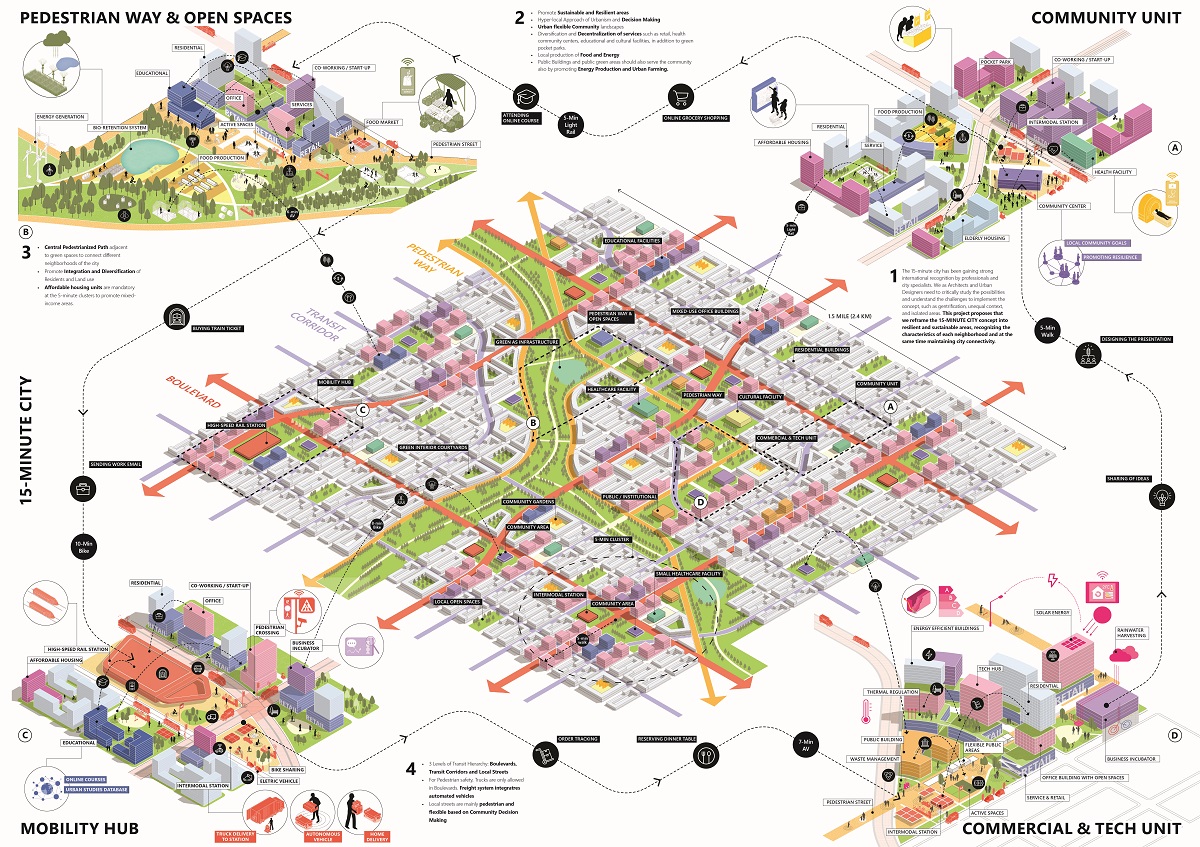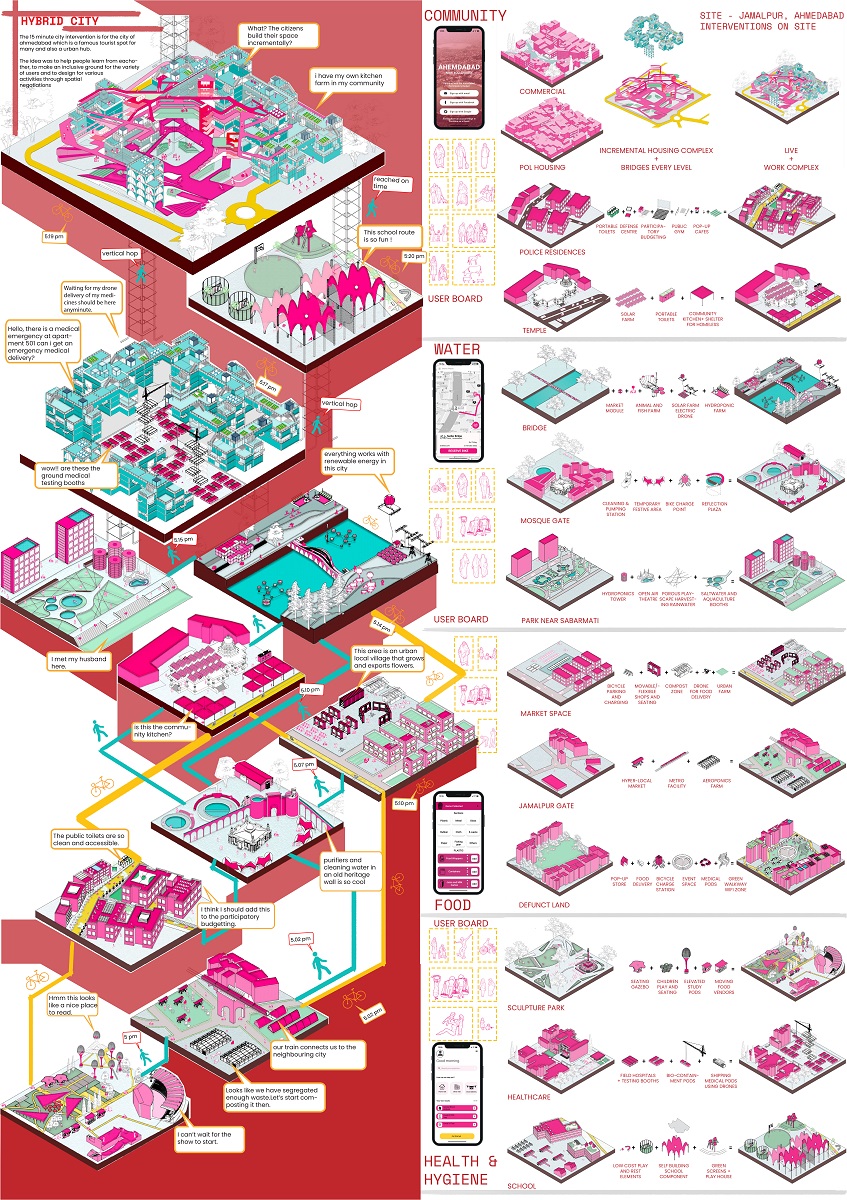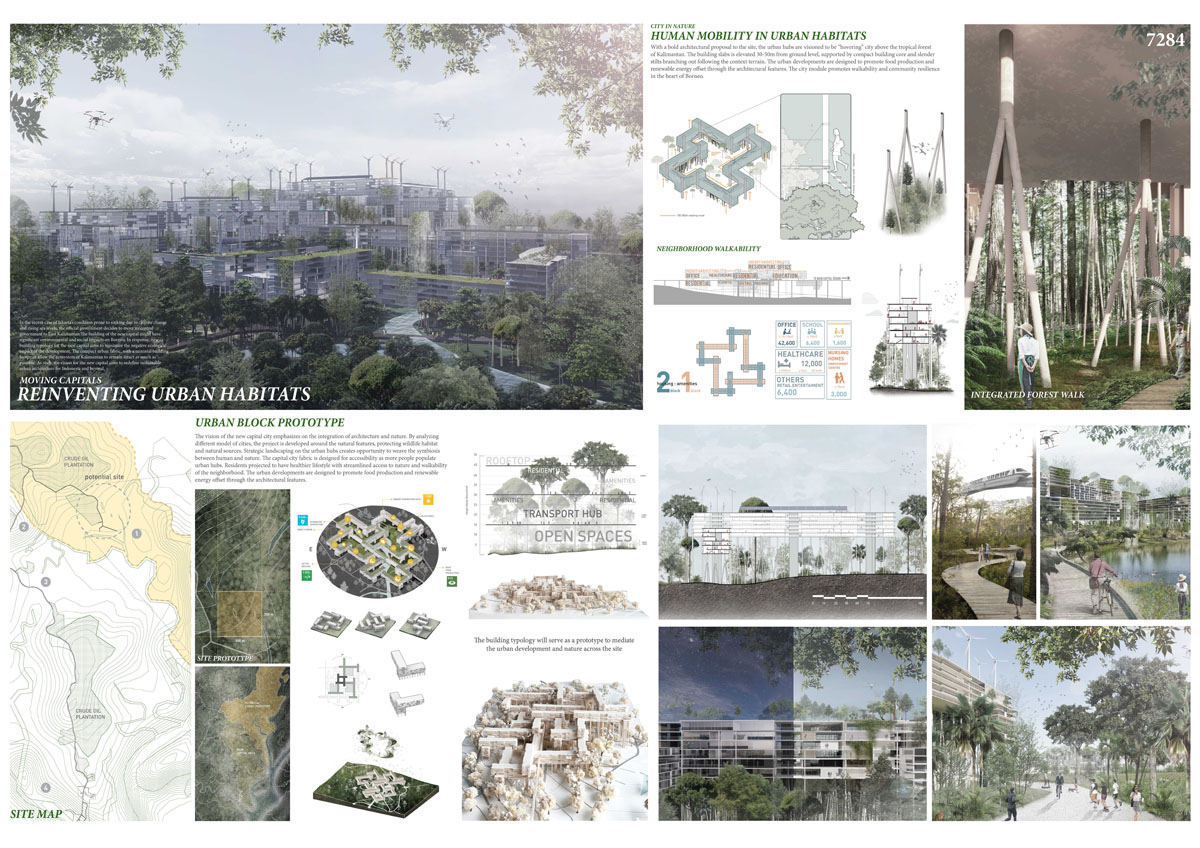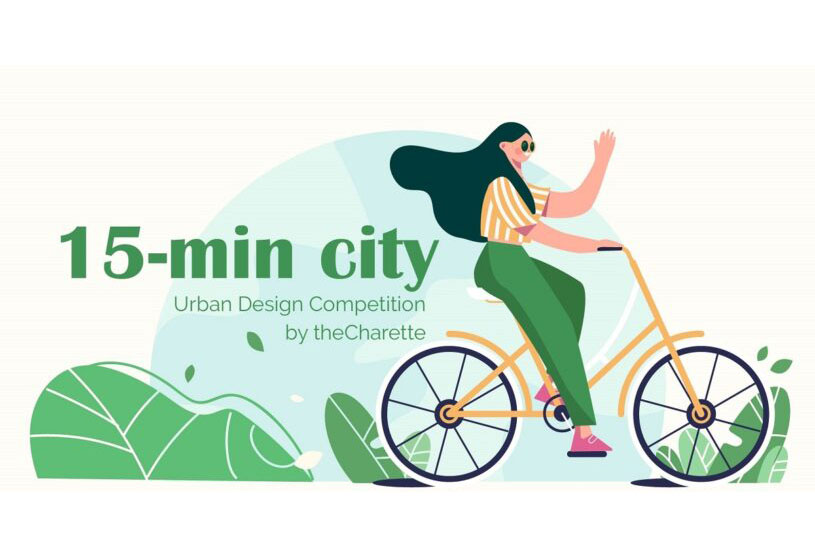Announcement
This is the idea behind a 15-minute city – a way to make urban living less stressful and more sustainable. A 15-minute city has affordable, accessible, and adaptable housing for households of all sizes and ages. It is easy to get goods and services, healthcare, fresh groceries, and all other amenities. People can work close to home or work remotely more often. Many major cities such as Paris, Melbourne, Detroit, Portland, and Ottawa have been working on similar concepts.
This competition encourages designers and planners to re-imagine our urban landscapes as cleaner, safer, healthier and more inclusive places to live!
Competition Brief
Where everything is 15 minutes away – by foot, bicycle, or public transit.
The “15-minute city” is an approach to urban design that aims to improve quality of life by creating cities where everything a resident needs can be reached within 15 minutes by foot, bike, or public transit. This concept puts an emphasis on careful planning at the neighborhood level, giving each district the features it needs to support a full life – including jobs, food, recreation, green space, housing, medical offices, small businesses, and more. And importantly, it’s a full life that doesn’t require a car.
Participants are required to design a module for a 15-minute city that can be replicated to create a larger city. You can design a fictional city or re-design a small part of an existing city anywhere in the world. Remember, you don’t need to design an entire city – just a module that can be replicated to create a larger city. As a city planner/designer, you are also free to recommend rules and policies to help make the lives of your city’s occupants better.
Jury
- JEFF SPECK_ Speck & Associates (Principal)
- LYNNE M. DEARBORN_ Association of Collegiate Schools of Architecture (President)
- LUNA KHIRFAN_ University of Waterloo (Associate Professor)
- FARZANEH HADAFI _ Islamic Azad University (Assistant Professor)
Winners of the competitions are as following:
Winner 1
Antonella Marzi • Viviane Viniarski • Jose Gerardo Ponte
Italy

Jury Comments:
“This proposal puts forward a comprehensive response to a fully integrated but dispersed city plan employing the TOD model. It provides a strong integration of green spaces interspersed in most community units suggesting a design response to address stress. It broadly integrates energy and food production and responds to the need for integrated affordable housing in the future urban context.“
“Attention to detail and visual communications are excellent. I really enjoyed how the participants have magnified four important units of their proposed city to present mixed land uses that promote sustainability, resilience, and self-sustenance. They have even mentioned the required time for walking from one unit to the other, which is excellent.”
Winner 2
Aayushi D’costa • Ruchika Khalate
India

Jury Comments
“This submission offers an innovative solution that addresses key concerns in global megacities like Ahmedabad. It addresses water, waste, food, equity, and energy. It doesn’t provide a comprehensive integrative proposal overall but rather through careful reading of an intricate and very interesting presentation, one finds the various pieces that are proposed to make a more livable city. It adds dimensions to the functionality of each piece of infrastructure it seeks to implement, and rethinks open spaces and what they can offer to a community (power generation, urban farming, etc.).“
Winner 3
Michelle Gouw
Singapore

Jury Comments
“An incredibly striking presentation that is visionary in its integration of architecture and nature to protect wildlife habitat and natural resources. It provides a model that limits the footprint of built fabric in a sensitive ecosystem while addressing the idea of the 15-minute city. It incorporates many aspects of human-nature symbiosis and addresses human and natural health, equity, resilience, alternative energy generation, and food production.“
